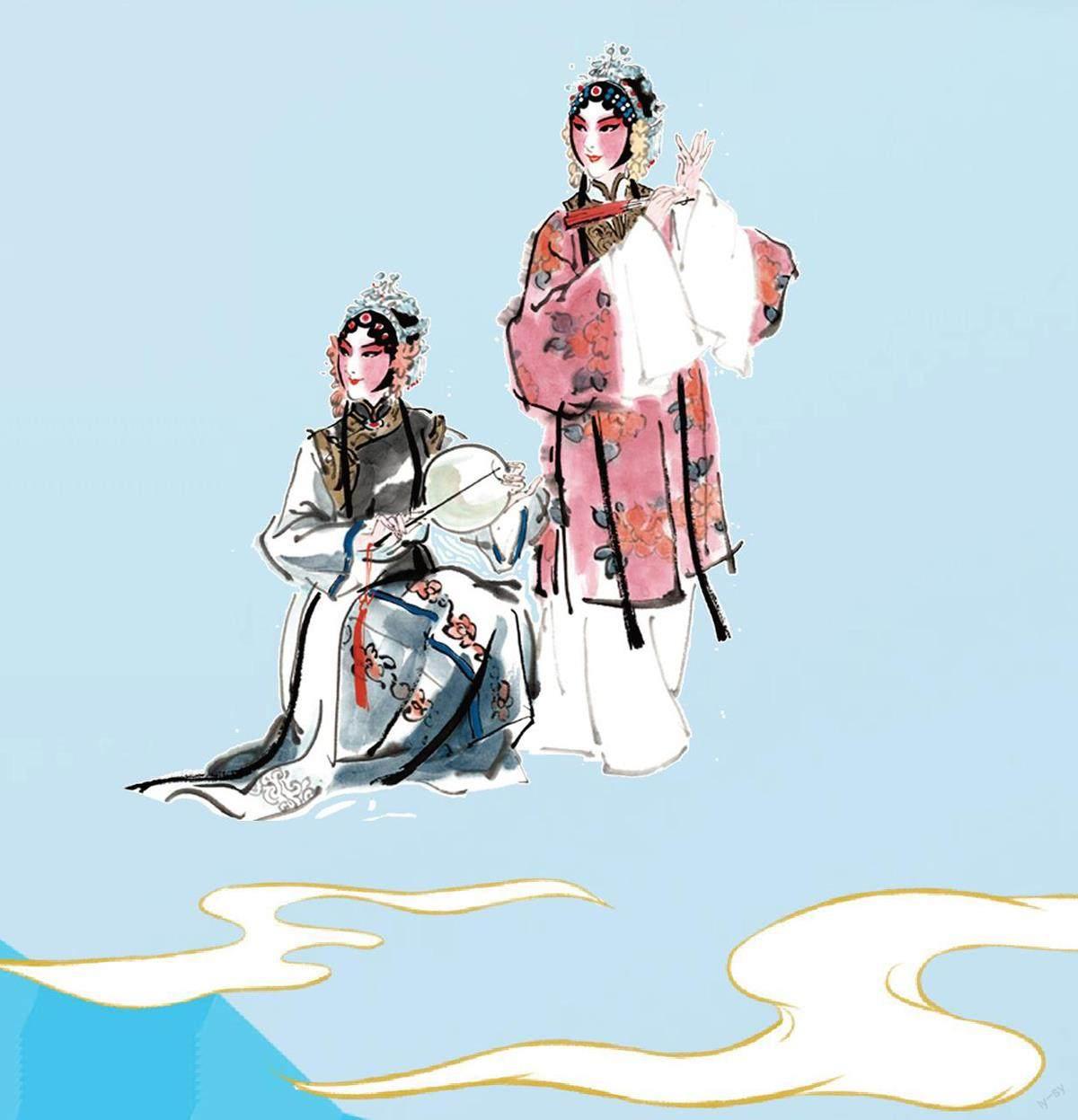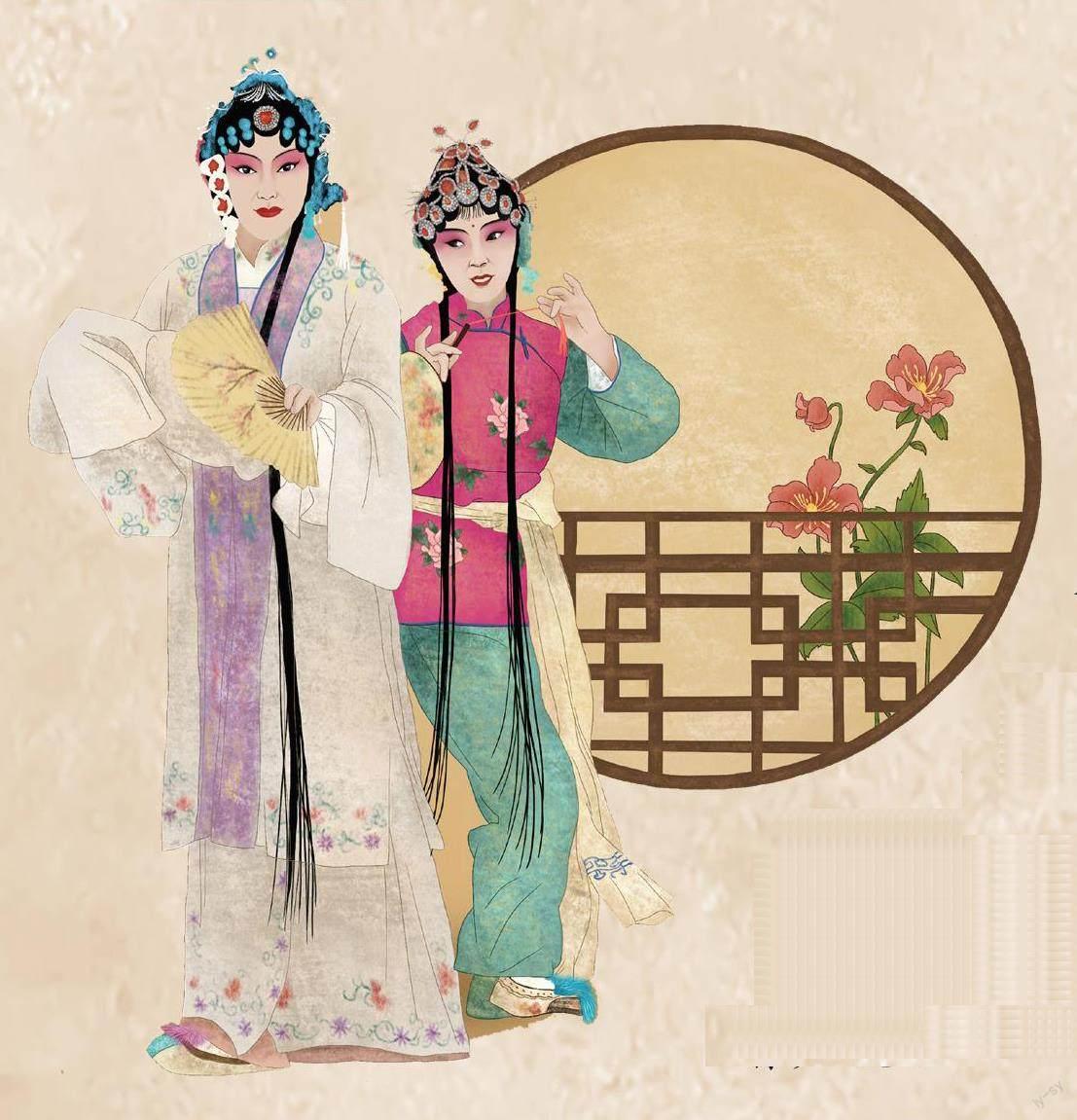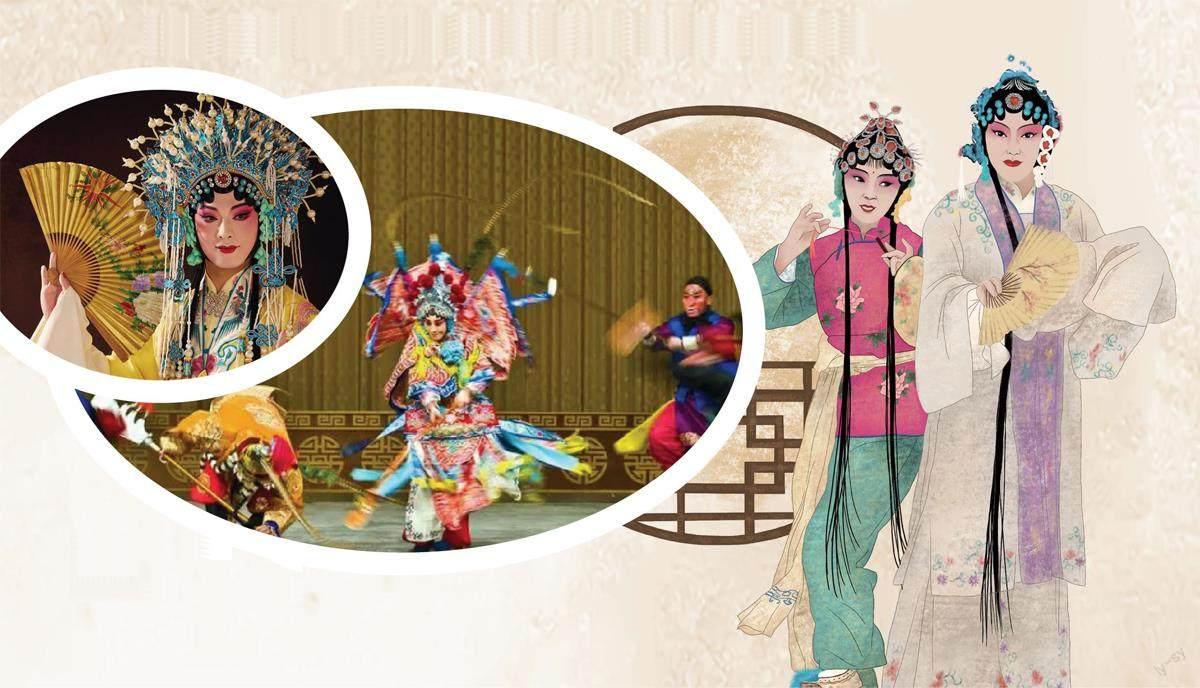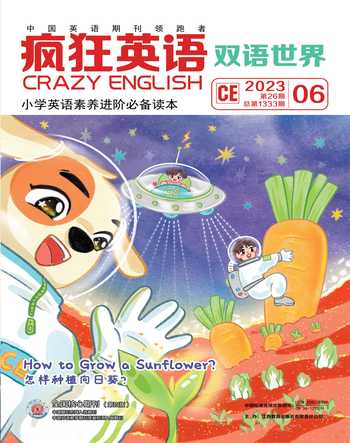How Much Do you Know about Peking Opera?你对京剧知多少?
周可



Peking opera is one of the five major traditional operas in China. Its vocal tones are mainly composed of xipi and erhuang, to the music played by such instruments as huqin, gong, and drum.
京剧是中国五大传统戏曲之一。它的音调主要由西皮和二黄组成,由胡琴、锣、鼓等乐器伴奏。
1. Origin
起源
Peking opera grew out of Huiju opera, a folk opera originallypopular in the regions around the south of the lower reaches of theYangtze River in the early Qing Dynasty.
京剧由徽剧发展而来,徽剧是清代早期流行于长江下游以南地区的一种民间戏曲。
In 1790, to celebrate the eightieth birthday of the Qianlong Emperor, the Four Great Anhui Troupes brought Huiju opera to Beijing to join the celebration. Their performances soon found an audience, marking the beginning of the more than 200 years of history of Peking opera.
1790年,为庆祝乾隆皇帝八十大寿,四大徽班将徽剧带到北京参加庆祝活动。他们的表演很快吸引了观众,这标志着京剧200多年历史的开始。
From 1840 to 1860, Peking opera congealed as a mixture of elements of Qinqiang opera, Hanju opera, certain strengths of Kunqu opera, and local tunes of Beijing. The new form then began to create its own innovations. For example, melodies were simplified, and were played with different traditional instruments than those used in earlier forms.
从1840年到1860年,京剧融合了秦腔、汉剧、昆曲和北京地方曲调的多种元素,然后开始创生出新的形式。例如,旋律被简化了,并使用与早期演奏形式不同的传统乐器。
2. Roles
脚色
Peking opera was originally an exclusively male pursuit. Theappearance of women on the stage began unofficially duringthe 1870s, when female performers began to play male roles anddeclared equality with men. The characters staged in Pekingopera are not based on the appearance of people in daily life. Ingeneral, the roles on the stage are divided into four categories:Sheng (male), Dan (female), Jing (male, painted-face characters)and Chou (male, clowns).
京剧最初仅是男性的专利。女性在京剧舞台上的出现始于19世纪70 年代,此时女性开始扮演男性角色,并宣布与男性平等。京剧中的人物并不是以人们在日常生活中的外表为基础的。一般来说,舞台上的脚色分为四类:生(男性)、旦(女性)、净(男性,画脸角色)和丑(男性,小丑)。
3. Costume and makeup
服装和化妆
In Peking opera, lower-level of f icials usually wear orchids,while only the emperor could wear yellow. The costumes ofPeking opera can be divided into six main categories.
在京剧中,下级官员通常佩戴兰花,只有皇帝才能佩戴黄色饰物。京剧的服装可以分为六大类。
Peking opera uses exaggerated expressions and methods to build different types of figures and characters from facial features, hairstyles, headwear and artificial whiskers. Facial make-up can help cover defects to make the character better fit the plot.
京劇使用夸张的表情和方法,从面部特征、发型、头饰和人造胡须等方面塑造不同类型的人物。面部化妆可以帮助弥补缺陷,使脚色更符合情节。
4. Musical Instruments
乐器
Erhu: The erhu is one of main musical instruments of Peking opera.
二胡:二胡是京剧的主要乐器之一。
Drum: Percussion instruments of different shapes and sizes are used in Peking opera to describe battles, court trials, executions, and similar scenes.
鼓:京劇中使用不同形状和大小不一的打击乐器来描述战斗、衙门审案、处决和类似的场景。
Gong: Players take the gongs rope with their left hand and beat the edge of the gong with their right. Its used in scenes where military of f icers enter the stage or at highly emotional moments.
锣:演奏者用左手握住锣的绳子,用右手敲击锣的边缘。它用于官兵上台的场景或情绪激动的时刻。
Yueqin: It enriches the voice in Peking opera so that the voice can be smoothly conveyed and increases the sense of rhythm. So singers can better express their emotions.
月琴:它丰富了京剧的声音,使声音能够顺利传达,增加了节奏感。因此,演唱者能够更好地表达他们的情感。
Sanxian: It has the widest range and richest timbre among the major musical instruments of Peking opera.
三弦:在京剧的主要乐器中,三弦音域最广,音色最丰富。
5. Mei Lanfang
梅兰芳
Mei Lanfang is regarded as one of the greatest Peking operaartists. He was born in Beijing in 1894. His father died, when hewas only 4 years old. Supported by his uncle, at the age of 8, hebegan to learn Peking opera. He studied very hard and made greatachievements.
梅兰芳被认为是最伟大的京剧艺术家之一。他1894 年出生于北京。4 岁时,他父亲就去世了。在叔叔的支持下,他8 岁开始学习京剧。他学习很努力,取得了很大的成就。
Mei Lanfang loved motherland verymuch. During the period of the ChinesePeoples War of Resistance Against Japanese Aggression, herefused to act for the Japanese invaders.
梅兰芳非常爱国。在抗日战争期间,他拒绝为日本侵略者表演。
Mei Lanfang passed away in 1961. However, the name Mei Lanfang is still popular among Chinese today.
梅兰芳于1961年去世。然而,梅兰芳这个名字在今天的中国仍然家喻户晓。
Notes:
vocal tones 音调
instrument n. 乐器
folk adj. 民间的
originally adv. 原始;最初
region n. 地区;区域
troupe n. 流派
audience n. 观众
mark v. 标志
congeal v. 凝结
element n. 元素
strength n. 优势,长处
local tunes 地方曲调
create v. 创造
innovation n. 创新
melody n. 旋律
simplified adj. 被简化了的
appearance n. 特征
stage n. 舞台
unofficially adv. 民间的
declare v. 宣布
equality n. 平等
category n. 类型;类别
orchid n. 兰花
exaggerated adj. 夸张的
method n. 经验;做法
facial features 面部表情
hairstyle n. 发型
headwear n. 头饰
artificial whisker 人造胡须
defect n. 缺点;缺陷
plot n. 情节
percussion n. 打击乐器
battle n. 战斗;打仗
court trial 法庭审判
execution n. 处决
scene n. 场景
beat v. 打击;敲打
military adj. 军事的
emotional adj. 情绪化的
convey v. 传达
rhythm n. 节奏
emotion n. 情绪;情感
range n. 范围
timbre n. 音色
pass away 去世

